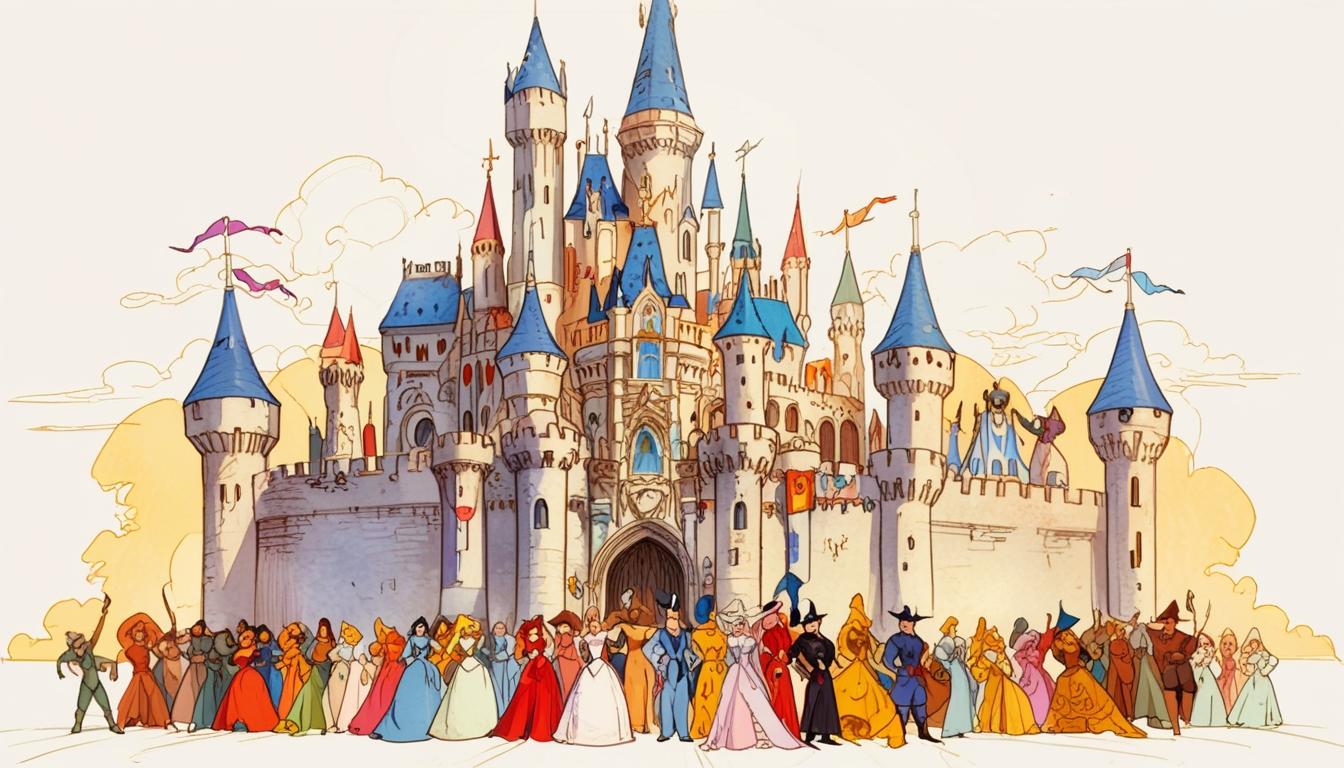Disney's Renaissance Era: A Complex Chapter Marked by Triumphs and Controversies
The Disney Renaissance Era, spanning the late 1980s through the mid-1990s, is often celebrated for revitalising Disney's animation department and producing some of its most iconic and successful animated films. Classics such as The Little Mermaid (1989), Beauty and the Beast (1991), and The Lion King (1994) emerged from this period, bringing musical adaptations of popular stories back to the forefront. However, beneath the surface of these celebrated successes, the era was also marked by notable challenges, controversies, and missed opportunities that continue to resonate within the company’s legacy.
Financial and Marketing Missteps: The Case of The Rescuers Down Under
One of the less successful films of the era was The Rescuers Down Under (1990), a sequel to the much loved The Rescuers (1977). Despite its potential, the film grossed only $47.4 million worldwide against a $35 million budget, making it a disappointing box office failure. Factors such as its release competing with the hugely popular Home Alone contributed to its struggle. However, according to reports, Disney Chairman Jeffrey Katzenberg made the decision to cease all marketing efforts for the film immediately after its disappointing opening weekend, which likely compounded its poor financial performance.
Leadership Feuds and Legal Battles
Jeffrey Katzenberg, credited with revitalising Disney animation as the company’s chairman during this period, ultimately left Disney after a falling out with then CEO Michael Eisner. Katzenberg’s aggressive push for a promotion to President led to tensions that resulted in his departure in 1994. Following his exit, Katzenberg filed a lawsuit against Disney, alleging breach of contract. This litigation escalated into a lengthy and costly legal battle, culminating in Disney paying $250 million in settlement. Katzenberg would later co-found DreamWorks Pictures, which has become a direct competitor to Disney in the industry.
Missed Creative Opportunities
Disney passed on several notable creative chances during the Renaissance Era. One significant example was the decision not to produce a feature-length adaptation of the fairy tale character Puss in Boots. Prior to DreamWorks' successful incorporation of Puss in Boots into the Shrek franchise and his own spin-offs, Disney had plans for such a film but ultimately cancelled it. Fans and industry observers have since speculated on how the landscape might have differed had Disney brought the character to the big screen first.
Contractual Issues with Voice Talent
The era was also notable for contractual conflicts affecting key talent. Robin Williams’ portrayal of the Genie in Aladdin (1992) is widely regarded as a groundbreaking voice performance. Williams accepted the role for $75,000 under the agreement that Disney would not use his voice for advertising or merchandise. However, the studio breached this agreement, leading to Williams’ refusal to return for the sequel, The Return of Jafar (1994), marking a significant discord between the actor and Disney.
Allegations of Plagiarism and Historical Controversies
The Lion King, Disney’s most financially successful Renaissance film, became subject to allegations of plagiarism due to striking similarities with a Japanese anime series, Kimba the White Lion. The company’s co-directors denied knowledge of the anime, and no legal action ensued. Nevertheless, the controversy lingered, somewhat tarnishing the otherwise celebrated film’s reputation.
Another contentious release was Pocahontas (1995), a Disney-fied retelling of the historical figure’s story. The film romantically depicted Pocahontas’s relationship with English settler John Smith, a narrative largely discredited by historians. Critics point out the film’s whitewashed portrayal that glossed over the violence and exploitation experienced by Indigenous peoples. Such creative choices sparked significant debate about Disney’s representation of history and Indigenous cultures.
Gender Representation and Diversity Challenges
While the Renaissance Era featured a number of female-led films, including Beauty and the Beast and Mulan (1998), studies revealed a significant imbalance in dialogue distribution. For example, in Beauty and the Beast men spoke 71% of the time, while in Aladdin men’s speech accounted for a staggering 90%. This reflected ongoing gender disparities in screen time and character agency, despite the prominence of iconic female characters.
Moreover, the animation studio had yet to appoint a female director during this timeframe, with the first female director, Jennifer Lee, not emerging until 2013 with Frozen. This underscored longstanding barriers to women holding leadership roles in animation. While screenwriting saw some breakthroughs, such as Linda Woolverton becoming Disney’s first female screenwriter with Beauty and the Beast, top creative positions remained predominantly male.
Perpetuation of Stereotypes
Disney’s Renaissance films also faced criticism for perpetuating racial and cultural stereotypes. Pocahontas included the song "Savages," which portrayed Indigenous people with derogatory terminology, reinforcing harmful stereotypes of "uncivilised" natives. Similarly, Aladdin was criticised for its "Orientalist" depictions, reflecting Western misconceptions about Middle Eastern culture. These portrayals prompted Disney+ to include disclaimers on the streaming versions to acknowledge the films’ dated cultural sensitivities.
Sexism in Storytelling
The Little Mermaid, praised at the time of release for its animation and music, has since been criticised for its storyline centring on a female protagonist willing to relinquish her voice and identity for a romantic interest. This narrative stands in contrast to the more empowered and independent female leads in recent Disney films.
In summary, Disney’s Renaissance Era was a period of both remarkable artistic achievement and critical challenges. The success of its animated musicals brought the studio back to prominence, yet the era was also marred by financial miscalculations, leadership conflicts, missed creative opportunities, gender and racial representation issues, and controversies over historical accuracy. These complexities contribute to an enduring conversation about the legacy and impact of one of Disney’s most celebrated chapters in animation history.
Source: Noah Wire Services
